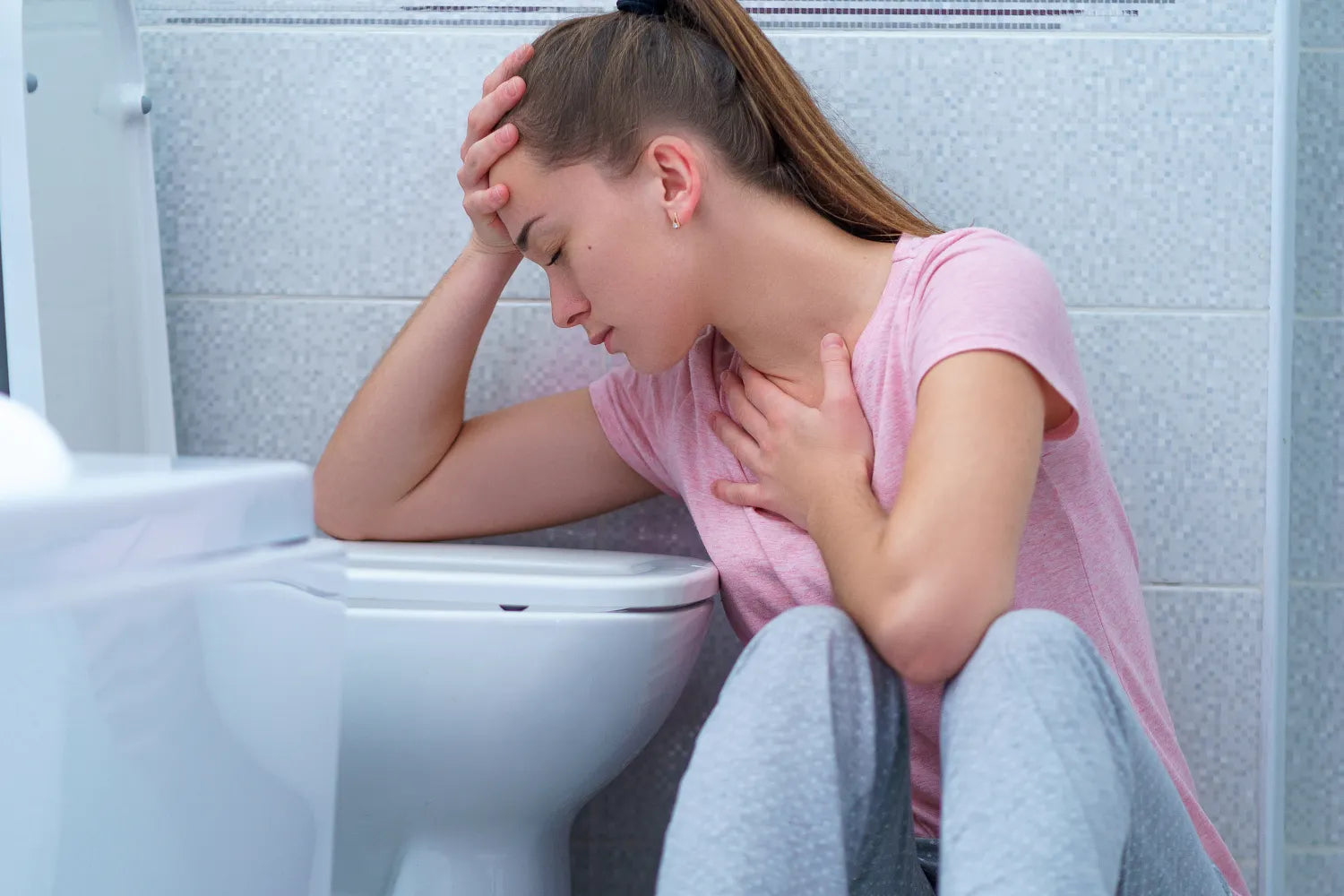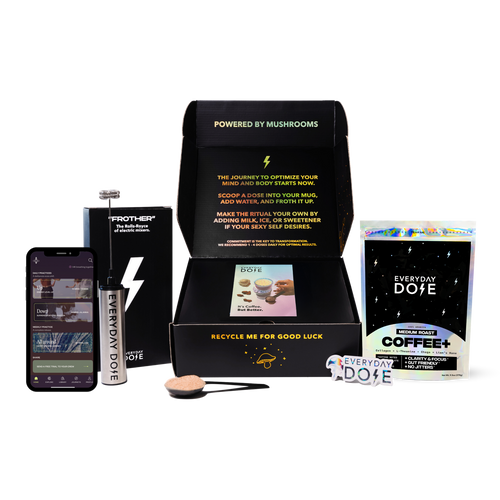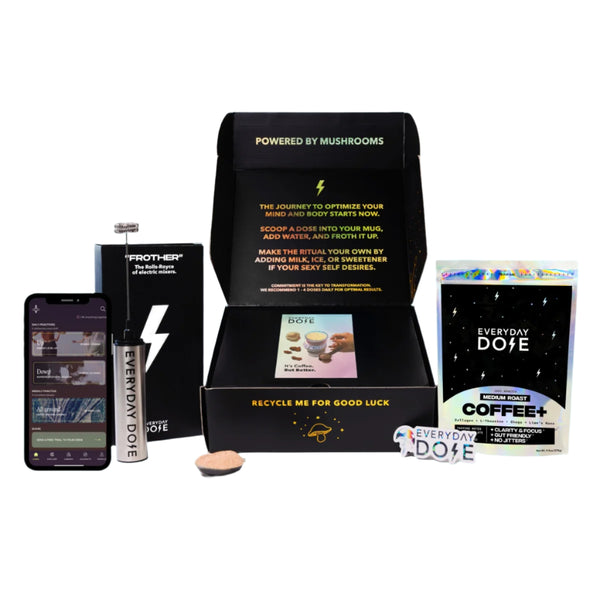Coffee Nausea: Why It Happens and How To Fix It

Is there anything better than waking up to the warm aroma of a hot cup of coffee? For many people, coffee is like a magic potion that instantly helps them feel focused and ready to tackle the day. However, not everyone has such a positive experience with caffeine.
If drinking coffee makes you feel a little queasy, you’re not alone. Read on to learn why coffee nausea happens and how you can prevent it.
Does Coffee Actually Cause Nausea?
Coffee nausea might sound like something made up, but it really is something that many people deal with. While coffee is a daily ritual for 62% of Americans, not everyone gets to enjoy benefits like energy boosts and extra focus.
For some people, the first or second cup of coffee can trigger some unpleasant sensations. These aren’t just limited to nausea — they can also include acid reflux, stomach cramps, diarrhea, jitters, anxiety, and sweating. There are things you can do to prevent this, but we’ll get to that in a minute.
What Causes Coffee Nausea?
Knowing what causes coffee nausea is the first step to beating it. Coffee nausea can have a few possible causes, most of which are related to how your body interacts with the drink.
The most common causes include the following:
- Increased Stomach Acidity: Coffee stimulates stomach acid production, which can irritate your stomach lining and cause nausea and heartburn.
- Caffeine Sensitivity: If your body has a low caffeine tolerance, even small amounts can wreak havoc on your nervous system, causing nausea or jitteriness.
- Drinking Coffee on an Empty Stomach: Without food to buffer its effects, coffee can be quite harsh on your digestive system.
- Additives: Although they’re delicious, sweeteners, creamers, or syrups might not sit well with everyone, and they could be the reason behind your nausea.
- Dehydration: Coffee can lead to dehydration thanks to its diuretic properties, which can increase urination and sweating. This can trigger nausea in some people.
How Can You Prevent Coffee Nausea?
Of course, the best way to fix coffee nausea is to keep it from happening. Read on for some suggestions on how to keep your stomach and your coffee addiction happy.
Choose Low-Acid Coffee
Low-acid coffee can be a game-changer if your morning brew leaves your stomach churning. Traditional coffee is naturally acidic, which can irritate the stomach lining and lead to nausea. This is especially true for those with sensitive stomachs.
You can buy coffee that’s specially roasted to be low in acid. Cold brew is another excellent option, as its brewing method naturally results in a lower acid content.
Reduce Caffeine Intake
Coffee with lower caffeine content can be gentler on your stomach. If you don’t want to reduce your coffee intake, you may want to consider drinking decaffeinated coffee or even alternating your coffee with herbal teas to reduce your overall caffeine load.
An even better option is opting for a coffee made with less caffeine such as our Mushroom Coffee+. Here’s a little secret: You don’t actually need huge amounts of caffeine to have a good time.
Our mushroom coffee contains only 40 mg of caffeine per serving, which sits right in the sweet spot. You still get the rush of motivation you’re used to with regular coffee, but you also get to stay far away from the unpleasant side effects of caffeine.
If you’re lowering your caffeine consumption, just make sure you do it slowly. This can help you avoid uncomfortable caffeine withdrawal symptoms.
Watch for Additives
What you put in your espresso can make a big difference in how your body reacts. If you normally like to load up on sweeteners, flavored syrups, and heavy creamers, it might be time to get back to the basics.
Try simplifying your coffee recipe by using natural alternatives like honey, stevia, or plant-based milk if you're lactose-intolerant. You should also watch out for artificial ingredients and flavored coffee beans, which may be harder for some people to digest.
Stay Hydrated
To prevent dehydration, pair your coffee with a tall glass of water or make it a habit to drink water throughout the day. For every cup of coffee you drink, try to drink at least the same amount of water.
We know that’s easier said than done, so if you need to keep things interesting, try opting for flavored water or ice water. As well as drinking water, make sure you stock up on electrolytes. These supplements can help your body actually use the water you take in, helping to counteract the negative effects of dehydration.
Eat Before Drinking Coffee
Another way to keep coffee nausea out of your life is to eat a balanced meal or snack before your first cup. Foods rich in protein, fiber, or healthy fats — like eggs, oatmeal, or avocado toast — can be especially helpful in reducing acidity and stabilizing blood sugar levels.
What If You’re Already Dealing With Coffee Nausea?
Prevention is all well and good, but what do you do if you’re already feeling sick? First, try sipping on soothing herbal teas like ginger or peppermint. These teas are known for their ability to calm upset stomachs and ease indigestion.
Deep breathing or light stretching can also help distract you from your nausea, which might help you feel a little better. If it’s possible, take a short walk or engage in some gentle exercise to boost circulation and support digestion.
Can Coffee Nausea Be a Sign of Something Serious?
It isn’t common, but in some cases, coffee nausea can be a sign of something more nefarious. If coffee nausea sticks around even after you change up your brewing method or daily routine, it may be time to get some medical advice.
Chronic nausea, severe stomach pain, or symptoms that worsen over time could signal an underlying digestive issue, such as gastroesophageal reflux disease (GERD). Your healthcare provider can help you pinpoint the cause and recommend personalized solutions (like switching to dark roast or decaf coffee) to make sure you can still enjoy your morning cup of joe.
The Bottom Line
Most people in America love coffee, but what do you do when coffee doesn’t love you back? If coffee tends to make you feel nauseous, it could be due to factors like dehydration, too much caffeine, increased stomach acid, and coffee additives. Luckily, you can get ahead of the game by lowering your coffee consumption, opting for low-caf or caffeine-free options, and staying hydrated.
At Everyday Dose, coffee isn’t just a wake-up call — it’s a ritual that helps set the tone for the entire day. Our mushroom coffee is powerful enough to get you out of bed but not so strong that it will make you feel sick. Plus, it contains some extra functional ingredients to help you own the day ahead. Try it for yourself, and don’t forget to visit our blog today to discover more coffee tips!
Sources:
NCA releases 2020 National Coffee Data Trends, the "Atlas of American Coffee"
Caffeine induces gastric acid secretion via bitter taste signaling in gastric parietal cells | PNAS
Caffeine: Is it dehydrating or not? | Mayo Clinic
Acids in brewed coffees: Chemical composition and sensory threshold | PMC
Start your day
The Right Way









